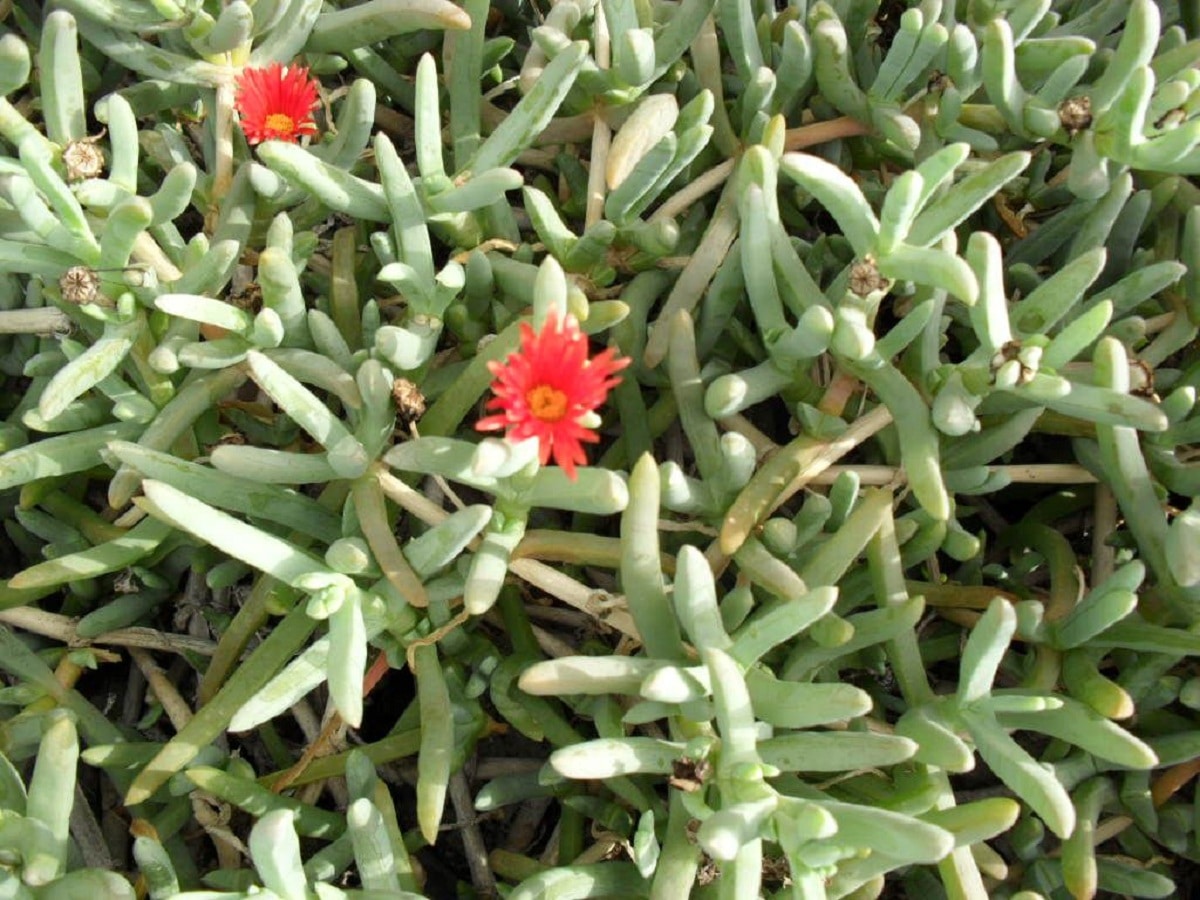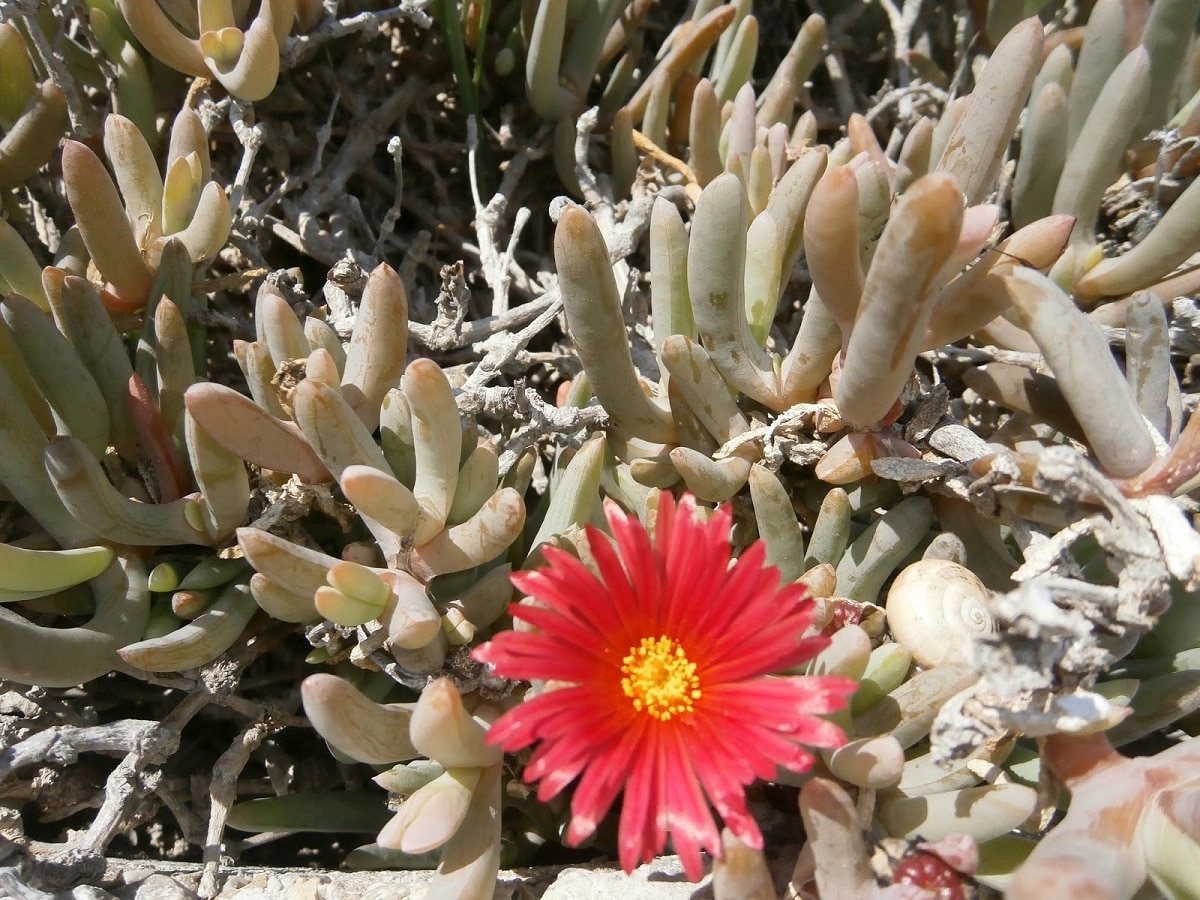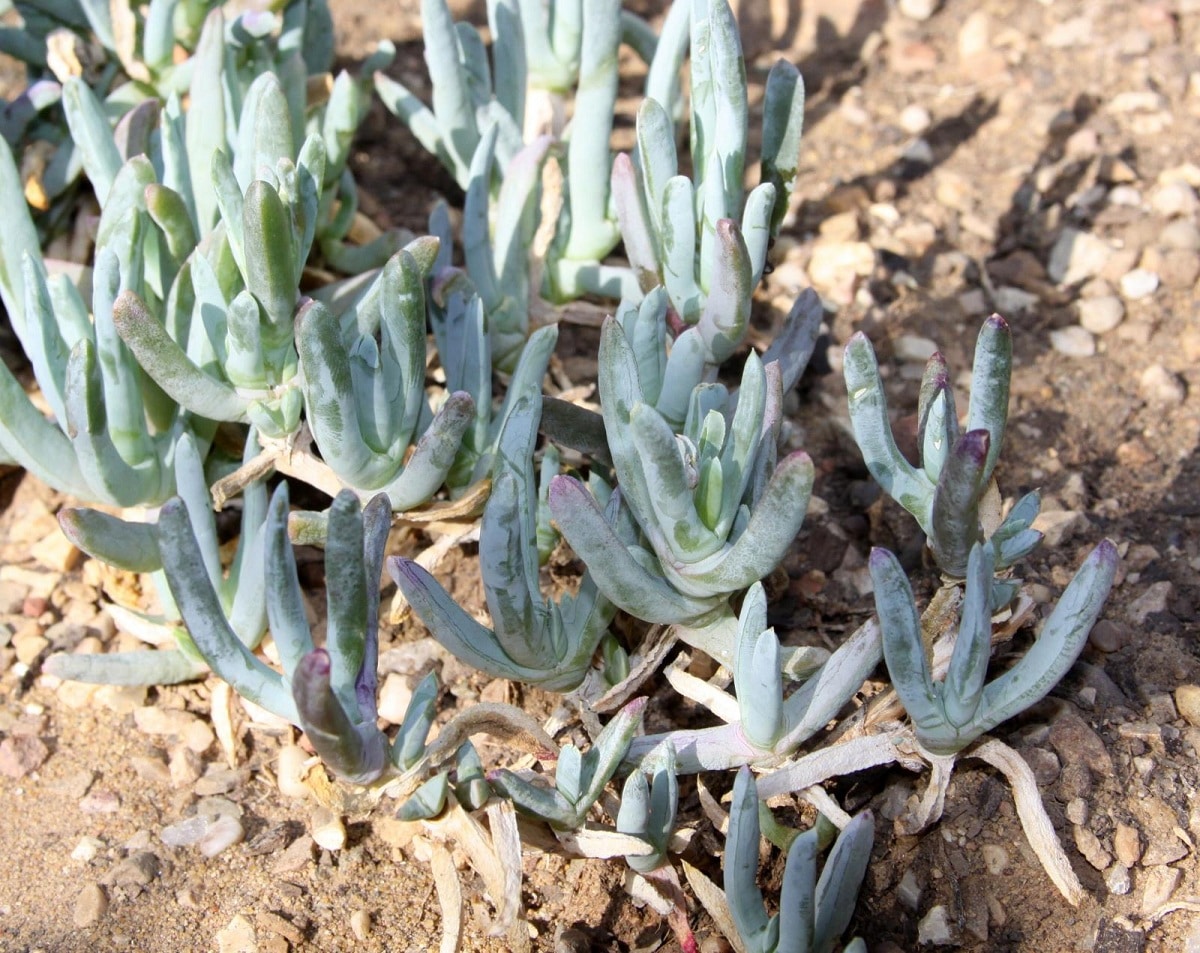
Today we are going to talk about a type of plant that belongs to the group of succulents and to the Aizoaceae family. Its about malephora crocea. This plant is evergreen and has a creeping bearing. It cannot be stepped on nor is it edible by humans. They are quite small in size and have some special features.
Therefore, we are going to dedicate this article to tell you all the characteristics, habitat and care of the malephora crocea.
Key features

The term malephora comes from the Greek Maleo which means charm and pherein which means to carry. It refers to the fact that this plant has a charm that makes it be used for ornamentation. It is a plant that belongs to the group of succulents so it contains some characteristics similar to the rest of its group. They are evergreen and have a creeping bearing. Due to their constitution they cannot be stepped on or eaten by humans. It is quite small in size for which barely exceed 20-30 centimeters.
It has fleshy, tubular-shaped leaves of a grayish-green or bluish color. The beauty of this species are the flowers. And it is that it produces small, but abundant and showy flowers. Flowering takes place from the early part of spring to late summer. They are very numerous and have bright colors. They have a peduncle between 1-6 centimeters and each flower can have between 40-65 petals. All this amount of petals gives it greater beauty. All the flowers can be of different very striking colors, among which are yellow, orange, pink, reddish and fuchsia.
The characteristic of the malephora crocea is that its flowers usually appear isolated and do not form a cluster. They can appear from the first year of life of the plant, so it is a plant that is perfect for ornamentation. And is that other plants take longer to make their flowers grow. This would be one of the fastest plants if we want to have a beautiful garden in a short time. The flowers open fully in the hours of the day during the times of greatest insolation. Contrary to what happens with other species that do not support direct sunlight, the malephora crocea he loves it.
Pollination is carried out by flies, bees, wasps and other insects that are attracted to nectar that produces the flower. Therefore, you should know that if you introduce this plant in your garden you will attract beneficial insects for it.
Leaves and seeds of the malephora crocea

The leaves are elongated and hairless. We know that many plants in the succulent group have small hairs that serve to protect themselves from changes in temperature and to retain moisture. The leaves have a triangular section rather round and opposite. Its peduncle is quite short and has a smooth edge. They are soft leaves, not thorny, nor leathery. Color is always light green or grayish green. It can become glaucous and turn more reddish in color if they lack water. It must be borne in mind that they are plants typical of desert areas so they are completely adapted for drought.
As for the seeds, they are quite numerous and can appear in quantities of 75 units per flower. They are small lenticular seeds with a rough surface. It releases its seeds after the flower has withered and dried. They have between 8 and 12 cork compartments where the seeds are. Some of them remain at the base of the flower capsule for a later occasion. This amount of seeds means that the plant was successful in reproducing and expanding its range.
Distribution area and uses
La malephora crocea is in shape natural at an altitude of between 1100 and 1600 meters. Normally its natural habitat is the Karoo desert in South Africa and Namibia. It is an endemic plant to these places, although it is capable of adapting perfectly to other warm, dry areas that do not have frosts. Thanks to this, it is a plant that has spread throughout the world with fully ornamental uses. Specimens can be found in California, Australia, Spain, Mexico, Arizona and Malta, among others. It should also be mentioned that they have been able to adapt to coastal areas, becoming invasive in some Mediterranean climates and to become completely naturalized in California since the 40s.
All this says a lot about a succulent capable of adapting to extreme drought conditions and, although it is an endemic species, its range is almost worldwide. It belongs to the Aizoaceae family and it is made up of about 15 species, all of them succulents from southern Africa. Among the vulgar names that it has, the coppery Mesen stands out.
Regarding the uses of the malephora crocea, we see that they can be used in rockeries and for borders being more suitable for pots and planters. It can grow perfectly if we place it on terraces and balconies since they only need a lot of light during the day. If the location of the terrace or balcony is very bright and you can take advantage of the hours of greater solar radiation, you will not need much more to develop. They are also ideal plants for gardens that are located by the sea in Mediterranean climates as it tolerates wind and salinity very well.
Caring for the malephora crocea

We are going to see some of the care and advice that we can give you about the care of this succulent. As we have already seen in the rest of the article, it needs a prolonged sun exposure to achieve a good flowering. It can resist some sporadic frost but of very low intensity. Temperatures should not drop below -5 degrees. It grows quite fast and its flowers flourish during the first year.
They can grow in almost any type of soil, as long as it is well drained and no rain or irrigation water accumulates. Thanks to their adaptability they grow in poor and sandy soils. They are very resistant to drought and have mechanisms for water retention. Thus, the risks must be very moderate. A small amount of water is sufficient if the summer is too dry and hot. If the plant suffers from an extreme drought, it is not going to indicate it by putting its leaves in a more reddish tone.
Although it is not necessary, it can be fertilized in late winter with some well-decomposed compost. Between maintenance tasks, you can always prune when the flowers are wilted and leave space to improve the next flowering. The biggest risk that this plant runs is overwatering, as they are resistant to pests and diseases of the gardens.
I hope that with this information you can learn more about the Malephora crocea.